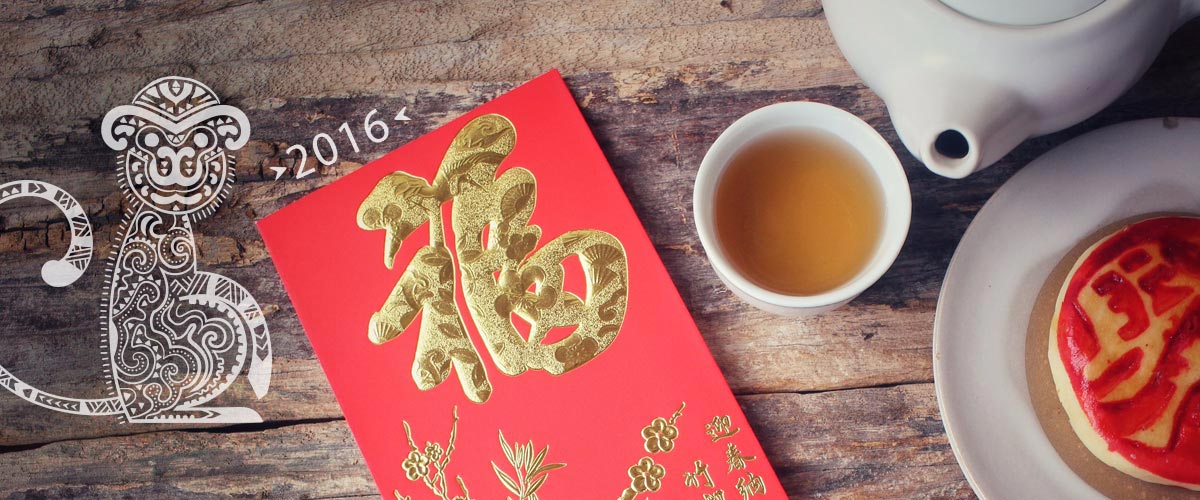Why tea is the perfect Chinese New Year gift!
It promotes health, mindfulness and quality time with family—what could be a better representation of Chinese New Year than a shared cup of tea?
“Chinese people value health above all things and giving tea is giving health,” says Raymond Leung, co-owner of Zensation Tea House in Sydney and one of the instigators of the biggest Chinese New Year celebrations outside Asia.
Chinese New Year is a time for family, a time for reflection and a time for well-wishing and there’s no better way to encompass all three than with a cup of tea. And yes, after millennia of drinking the stuff, the Chinese have a tea-drinking ritual just for the Lunar New Year.
A recipe for good health
The Chinese New Year tea ritual features a sweet tea. Once upon a time there were probably specific ingredients but nowadays families make up their own recipe of symbolic fruits and herbs with various properties. Candied lotus seeds symbolise fertility, for example, dried apple symbolises wisdom and shredded coconut is for togetherness.
One popular tea offering is Ba Bao Cha, or Eight Treasure Tea, which is often taken as a health tonic outside of the new year period, but which is the perfect brew to symbolise health and prosperity.
The ingredients are (usually):
- High grade Chinese tea
- Chrysanthemum flowers (for the lungs)
- Goji berries (for the liver and kidneys)
- Longans (for the blood)
- Jujube/red dates (for the blood)
- Ginseng (for energy)
- Rock sugar (to sweeten)
- Licorice root (for the throat)
If you’re mixing the tea yourself, a black tea, oolong or ripe pu’er is a good base for these fruits and herbs, or you can buy pre-made Eight Treasure Tea from Chinese grocery stores and tea houses. Once the tea has been prepared, it is then offered to the elder family members.
The Chinese New Year tea ritual
Traditionally the tea ritual begins on the first morning of the first day of the Lunar New Year in the family home or at the home of relatives. Everyone should be dressed in their best, ideally new, clothes. People of the eldest generation sit in the most prominent chairs in the room.
(If there are more than two generations in the room, the youngest generation starts first by offering the eldest generation the tea, followed by offering tea to the second eldest generation, then the second eldest generation offers tea to the eldest generation. The youngest generation does not drink the tea.)
The younger tea offerer faces the elder tea drinker and gives the cup to him/her using both hands. If the cup has a handle, it is offered to the elder with the handle pointing to the elder’s right hand. If the cup is handleless, it should be offered on a saucer or small tray. As the elder sips the tea, the younger must express good wishes for the new year. The elder then gives the younger a red packet and returns the good wishes.
The red packet (referred to by a number of names such as ang pow, lai see or hongbao) is a symbol of good luck. Today it is likely to contain money (crisp new banknotes are the most auspicious), though in the past it would contain a written version of the good wishes.
For subsequent offerers giving wishes to the same receiver, the same cup is refilled; for new receivers, a fresh cup is used.
The ritual may seem a little archaic to some but it is not only deeply symbolic of Chinese culture in its deference to the elders, it reminds the participants of three important things: health, family and a positive outlook for the coming year. Shouldn’t everyone’s new year start with a cup of tea like this?
Monkey tea, monkey do
February 8, 2016 marks the beginning of the Year of the Monkey. Here are some teas that are monkey-themed.
Tai Ping Hou Kui, ‘peaceful monkey leader’ (sometimes translated as ‘monkey king’) is large and flat, consisting of a bud and two spear-like leaves. It is a rare tea from Anhui province, making it perfect for an impressive gift. Beware though, there are many imitation teas.
Tie Guanyin Ma Liu Mei (‘monkey-picked iron goddess’) is also an option. The mountainous tea-growing areas of Fujian have produced some fine oolongs, most notably Tie Guanyin, a fresh and fruity tea with a floral bouquet. Monkey pluck tea is so named due to a myth that tea growers trained monkeys to pluck the finest leaves from the trees situated on the more treacherous outcrops. In any case, it is a top grade Tie Guanyin.
Jin Hou Cha, or ‘golden monkey tea’, is another Fujian favourite. This fine tea has thin honey coloured leaves with a golden brown bud and brews a deep red cup of delicate sweet malty liquor, a crowd-pleaser.

